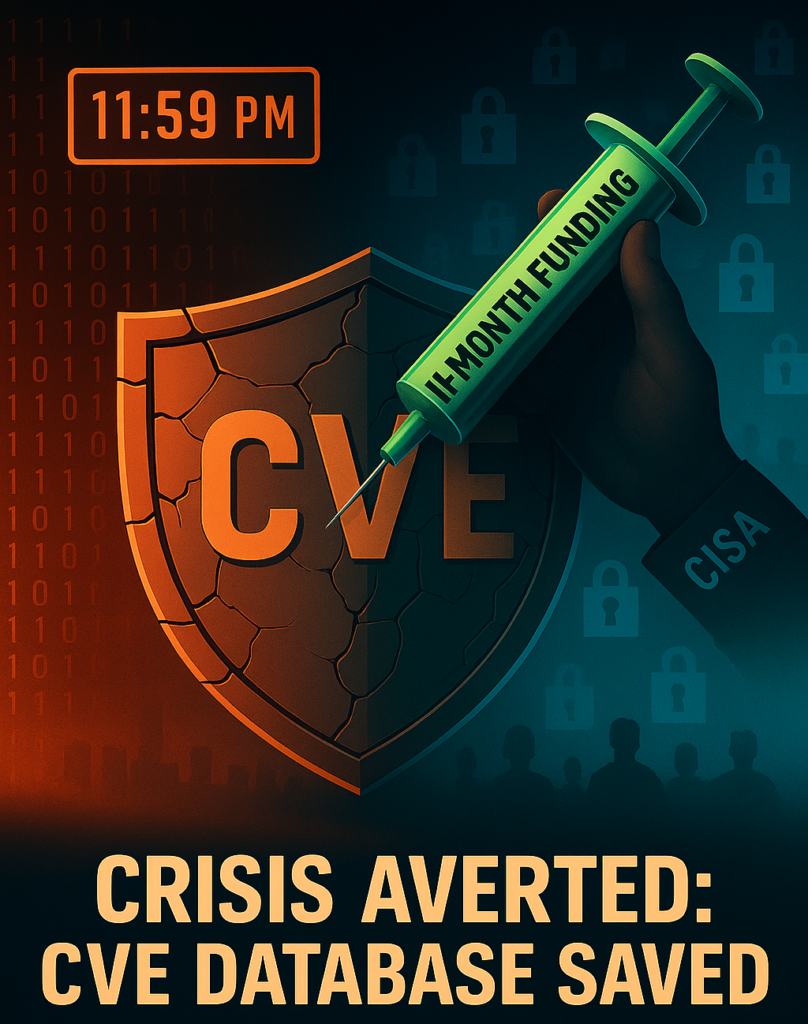U.S. officials approved an 11-month extension for the CVE a vulnerability tracking system, just days before it was set to expire. The decision brought relief to cybersecurity teams across the globe.

Common Vulnerabilities and Exposures (CVE), a database run by the nonprofit MITRE, is the widely-used “phone book” of security flaws. Anyone discovering a new vulnerability gets a CVE ID (for example, CVE-2024-12345), which is then used by vendors, developers, and defenders worldwide to coordinate remediation efforts.
Without the CVE system, companies could identify thousands of vulnerabilities in a week with no way to determine which ones pose real threats. Learn more about how CVE works .
“We were in a nightmare scenario,” said Mark Richardson, a security engineer with a major tech manufacturer. “All our automated scans, all our patch management, all of our internal reports depend on those CVE numbers. Without them is almost a generational setback for security teams.”
The come-from-behind approval came after weeks of cybersecurity panic. The Department of Homeland Security’s Cybersecurity and Infrastructure Security Agency (CISA) approved funding for the CVE program late Wednesday evening. While the short-term crisis has been averted, long-term uncertainty looms over its sustainability.
Had the CVE system shut down, security professionals warned of three immediate consequences:
- Vulnerability scanners would be reduced to raw, contextless data.
- Organizations might miss critical flaws due to the lack of a standardized reference.
- Patch management and threat intelligence pipelines would be severely disrupted.
This episode highlighted just how essential CVE is to the global cybersecurity ecosystem. For a deeper dive into what could have happened if the U.S. had not extended CVE funding — and why it matters — read our in-depth article:
👉 What Happens Now If U.S. Stops Funding MITRE’s Critical CVE Cybersecurity Program .
